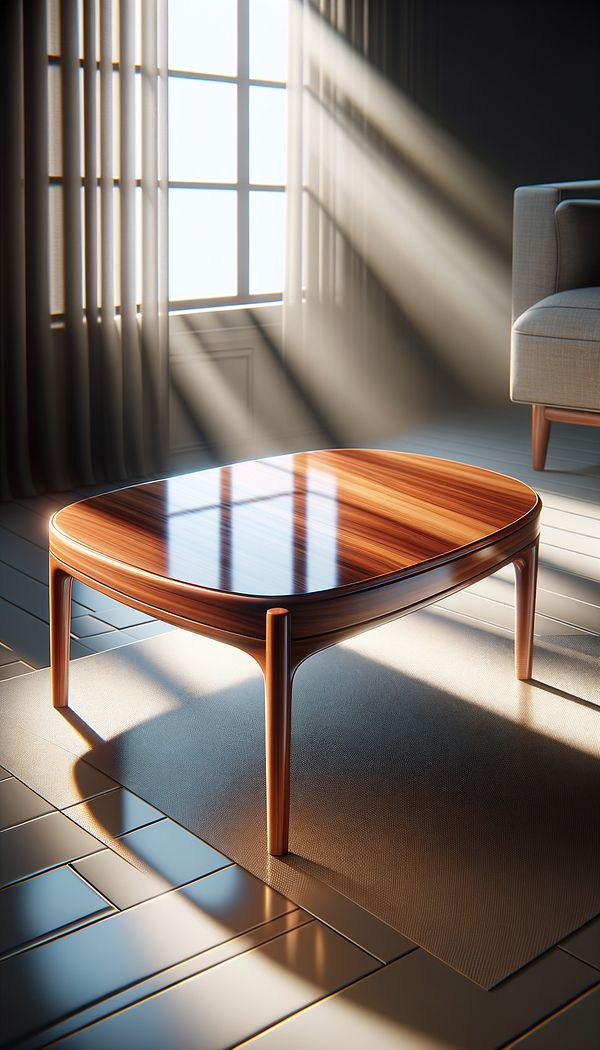What is Lacquer?
Lacquer is a clear or colored varnish that dries by solvent evaporation to produce a hard, durable finish.
Description
Lacquer is a term that refers to a variety of hard, durable finish applied to materials such as wood and metal. This finish can be clear, to highlight the natural beauty of the wood grain, or tinted with color to enhance or alter the appearance of the surface it covers. The primary ingredients in lacquer include a resin that provides the hard finish, a solvent that allows it to be spread effectively, and sometimes a pigment if color is desired. Lacquer finishes are appreciated for their ability to dry quickly, often much faster than traditional varnishes, and for creating a smooth, hard finish that is resistant to water, alcohol, and acids.
Lacquer can be applied with a brush, sprayed on, or poured, depending on the desired effect and the specifics of the project. It is commonly used in interior design to create glossy, sleek surfaces on furniture, cabinets, and decorative objects. The technique of applying lacquer is an ancient one, with roots in East Asian art and furniture design, where it has been used for centuries to create beautiful, durable finishes. In contemporary interior design, lacquer is valued for its versatility and the depth of finish it can provide, making it a popular choice for a wide range of applications.
However, working with lacquer requires careful preparation and application techniques. Due to its quick-drying nature, it can be difficult to correct any mistakes once the lacquer has started to set. Additionally, because it uses chemical solvents, it's important to work in a well-ventilated area or wear protective gear to avoid inhaling fumes. Despite these considerations, lacquer remains a favored finish for its aesthetic qualities and functional benefits.
Usage
Lacquer is widely used in furniture making, especially for pieces like coffee tables, sideboards, and cabinets, where a durable and high-gloss finish is desired. It's also popular in the creation of musical instruments, such as pianos and guitars, for its ability to provide a protective coating that enhances the instrument's visual appeal and longevity. In decorative items, from small trinkets to large artworks, lacquer serves both an aesthetic and protective role, offering a lustrous finish that guards against damage and wear.
FAQs
-
Can lacquer be applied over any type of material?
Lacquer is most commonly applied to wood and metal surfaces, but it can also adhere to other materials with proper preparation. However, its suitability and the method of application can vary depending on the surface material.
-
Is lacquer finish waterproof?
While lacquer provides a durable finish that is resistant to water, it is not entirely waterproof. Prolonged exposure to water can eventually damage a lacquer finish, so it's best used in areas where it won't be in constant contact with water.
-
How do you care for lacquered surfaces?
To maintain the appearance of lacquered surfaces, clean them with a soft, damp cloth to remove dust and fingerprints. Avoid using abrasive cleaners or solvents that can damage the finish. Regular dusting and gentle cleaning will help preserve the shine and durability of the lacquer.
Practical Application
When applying lacquer, it's important to prepare the surface thoroughly by cleaning and sanding to ensure a smooth application. Apply lacquer in a well-ventilated area, using thin coats to build up the desired level of finish. Allow each coat to dry completely before applying the next. For a more durable finish, consider sanding lightly between coats. This technique can help create a smoother, more uniform finish that enhances the beauty and longevity of the piece.
-
Furniture Types599 articles
-
Decorative Techniques322 articles
-
Fabrication & Craftsmanship133 articles
-
Materials & Textiles360 articles
-
Wall Treatments & Finishes157 articles
-
Split Queen BoxSplit Queen Box refers to a type of bed base composed of two separate pieces designed to support a queen-sized mattress.
-
Engineered HardwoodEngineered hardwood is a type of flooring made from multiple layers of wood, including a real hardwood top layer.
-
Radiator CoverA radiator cover is a protective decorative casing placed around a radiator.
-
American FrontierAmerican Frontier refers to a style of interior design inspired by the American West.
-
OgeeAn Ogee is a type of curved shape, consisting of a concave arc flowing into a convex arc.
